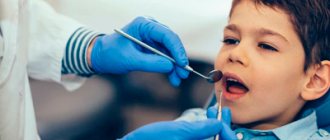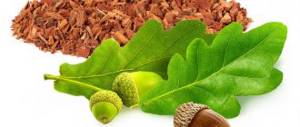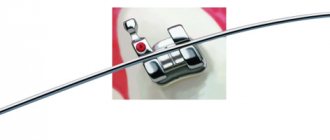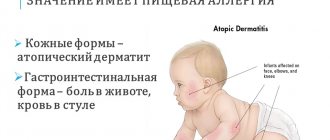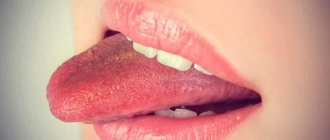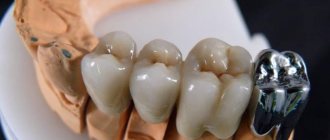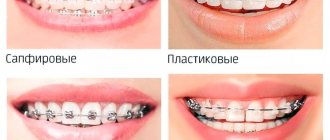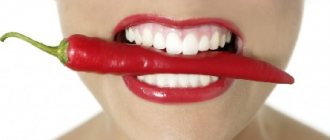All parents are attentive to their children, especially babies.
If white spots appear on the palate of a child, adults often do not know what to do or how to treat it. Therefore, it is important to remember that any rashes and spots that appear on the mucous membrane should be accompanied by a trip to the doctor. These spots are not always harmless; they can be a consequence of serious diseases. A small organism is not able to fight this on its own, so the doctor must conduct an examination, diagnose and prescribe treatment. The causes of plaque in a child can be different. This can be either candidal stomatitis or tonsillitis. These diseases are considered normal, and a baby with a strong immune system can easily overcome them. White spots on the palate of a child can last up to several months, depending on the strength of the body's immune system.
With angina, the following symptoms will be observed: lethargy, anxiety, the child becomes capricious. Stomatitis can occur due to poor oral hygiene or lack of calcium in breast milk.
Features of the oral cavity
The mucous membrane of a healthy child's mouth is bright pink due to the large number of blood vessels. As she grows older, her shade fades.
The epithelial layer is distinguished by tenderness and vulnerability, as well as some dryness due to the not very active work of the salivary glands (up to 3-4 months).
The baby's mouth is ideally suited for sucking. A wide tongue, a fold on the gums formed by the mucous membrane, pads on the inside of the lips, a “suction cup” on the upper lip - all this provides a tight grip on the bottle or nipple and facilitates the process of obtaining food.
What features or problems can be detected by looking into a baby’s mouth? Main options:
- white bumps on the palate;
- abnormal appearance or position of the tongue;
- white plaque on the inside of the mouth.
Rehabilitation period
The duration of postoperative rehabilitation is determined by the complexity of the case and the age of the patient.
If your child was born with a cleft palate, be prepared for the fact that his treatment will not be limited to surgery. The restoration of many functions depends on the quality of rehabilitation measures. In a hospital setting, they are aimed at improving the patient’s well-being, organizing proper nutrition, preventing disorders of the upper respiratory tract, and preventing infectious diseases and complications. In the future, the baby needs:
- additional treatment by an orthodontist for the correct relationship between the sizes of the dental arches and the development of the upper jaw;
- systematic observation by an otolaryngologist to monitor communication of the oral and nasal cavities, the functioning of the respiratory and hearing organs, and the prevention of ENT diseases;
- classes with a speech therapist to establish proper breathing, sound production, articulation, and correction of speech defects;
- consultation with a defectologist to identify possible developmental delays.
"Epstein's Pearls"
In 65-85% of babies after birth, several yellow-white tubercles with a diameter of 1-3 mm are found along the palatine suture. They are called palatal cysts or “Epstein's pearls.”
They are formed from residual fragments of the epithelial lining, which is destroyed under the influence of enzymes during fetal development. Epstein Pearls are filled with keratin.
Palatal cysts do not require treatment and do not cause discomfort to the child. They atrophy on their own in the first months of life.
Diagnosis of the defect
The intrauterine development of the fetal facial bones suggests their fusion at the 7-8th week of pregnancy. The formation of the oral and nasal cavities occurs in parallel. Disruption of these processes can become a turning point in normal development, causing abnormalities, and the cause of cleft palate in children. By 2 months, the embryo’s upper jaw is finally formed from halves growing towards each other. A delay in their fusion leads to a defect that is diagnosed in the womb.
A routine ultrasound examination reveals the defect at 14-16 weeks of pregnancy. The volume, shape of the lesion and the complexity of the disease can only be assessed after the baby is born. The diagnosis of “cleft palate” in a newborn child is clarified by examination of the pharynx and a number of additional studies. Their goal is to determine possible pathologies of skull development, breathing disorders, smell, hearing and sound production.
Language
Normally, the tongue is located along the midline of the jaw. If there is a constant deviation (recession) to the right or left, parents should show the child to a neurologist. This symptom may indicate damage to the caudal group of nerves of the skull. An additional sign is a drooping soft palate.
Another reason to seek help is that the language is too broad. This symptom is observed with hypothyroidism (decreased functional activity of the thyroid gland) and some genetic syndromes.
The listed phenomena are rare, unlike a short hyoid frenulum. This minimal anomaly in the structure of the maxillofacial apparatus can be determined visually; in addition, when screaming, the tip of the baby’s tongue rises. A short frenulum is not dangerous, but it can make sucking difficult and, in the future, complicate the pronunciation of sounds. In infancy, it is easily cut with a scalpel in an outpatient setting without suturing and virtually no blood.
Location of plaque on other parts of the body
White plaque on a baby's butt and groin can be caused by a large number of skin folds, which cause severe friction of the skin. It is in these places that various bacteria often multiply. White plaque in a baby's groin can cause a very unpleasant odor.
In some cases, a white coating appears behind the ears of the baby. This is not a serious problem since the ears are an exposed part of the body. To treat white plaque in the ears of a baby, it is enough to apply Bepanten ointment to the affected area after the doctor’s permission.
White plaque in a baby's armpits may appear for the same reason as in the groin area. Due to skin friction, diaper rash and plaque may appear here. Irritation in this area is also common.
White plaque
The tongue and palate of an infant may be covered with a thin whitish coating. Main reasons:
- leftover food;
- mouth breathing;
- thrush.
Leftover food
Immediately after feeding, you can see the remains of breast milk or formula on the baby's tongue and palate. After some time, the plaque disappears on its own. Many pediatricians advise removing traces of food from the baby’s mouth, as they serve as a breeding ground for opportunistic microorganisms.
Cleaning methods:
- give the baby 1-2 teaspoons of boiled water immediately after feeding;
- wipe the epithelial membrane 2 times a day with soda solution or water (the procedure is described below).
If the plaque is easily removed or disappears on its own (it is not present before feeding), do not worry. But in cases where white marks on the tongue, palate and inner surface of the cheeks are constantly present, it is necessary to consult a doctor.
Mouth breathing
If a child breathes through his mouth, his mucous membrane dries out and a whitish coating forms on it. In children under one year of age, this phenomenon is most often caused by acute respiratory viral infections and dry air in the room, which leads to the formation of crusts in the nasal passages.
The only way to prevent the formation of white plaque is to restore nasal breathing in the baby. Basic methods:
- when the mucus dries out, instill saline and oil drops into the nose, as well as humidify the air;
- for a runny nose and congestion due to ARVI - similar measures, in addition, the doctor may recommend the use of vasoconstrictor drops (no longer than 5-7 days).
How and where to treat a cleft palate?
Cleft palate surgery and cosmetic facial plastic surgery can eliminate external defects and restore the functionality of the oral and nasal cavities in a newborn (questionable, the operation is performed at the age of two years).
During the surgical operation, the palatine and pharyngeal muscles are connected in the correct position, the integrity, normal shape and functioning of all structures are restored. The extent of surgical interventions and the appropriate age for this are determined by the type of anomaly and the complexity of the case. After a thorough examination of the baby by the surgeon, one of the treatment tactics for children with cleft palate is selected:
- Uranoplasty (corrective surgery) from the age of 2 years – for incomplete clefts in children with regular upper jaw dentition.
- Uranoplasty at 4-6 years of age with preoperative orthodontic therapy - with a narrowed upper jaw and clefting, including the alveolar process.
- Two-stage correction (soft tissue plastic surgery with narrowing of the pharynx and, 6-8 months later, surgery on the hard palate with the alveolar process with simultaneous bone grafting).
The essence and causes of thrush
Microscopic yeast-like fungi of the genus Candida live on the mucous membranes and skin of every person. They do not cause harm to health, but only if the immune system suppresses their active reproduction. Otherwise, an inflammatory disease called candidiasis occurs. If fungi colonize the oral mucosa, candidal stomatitis, or thrush, is diagnosed.
The disease is detected in 4-5% of infants. Its main reasons:
- low level of immunity, characteristic of all newborns;
- decrease in protective forces as a result of teething, acute respiratory infections, dysbiosis, intestinal infection, and so on;
- non-compliance with hygiene standards - insufficient cleaning of children's dishes, toys, mother's skin (during breastfeeding);
- antibiotic treatment, which disrupts the balance of bacteria on the mucous membranes;
- drinking sweet tea, water, compote or a mixture - leftover sugar in the mouth contributes to the growth of fungi.
In addition, a baby can “get” too many candida when in contact with adults. Most often, infection occurs during childbirth if the mother has genital thrush. Kissing and sharing utensils can also lead to infection if an adult has candidal stomatitis.
Treatment
Fungal diseases in children can be treated by a pediatrician, an infectious disease specialist or a dermatologist. If we are talking about the treatment of oral thrush, then therapy can also be carried out by a dentist.
The diagnosis of candidiasis is determined in most cases based on an examination of the oral cavity performed by a specialist. If there is any doubt, the doctor refers the patient for additional examinations. More often, to confirm the disease, a laboratory test is used to test a smear taken from the mouth for the presence of fungus.
Treatment of thrush in children requires an integrated approach. If the disease is not advanced, then local therapy is carried out in combination with measures to strengthen the immune system. In severe cases, oral candidiasis in children is treated with systemic drugs, local agents and compliance with preventive recommendations.
Symptoms of oral candidiasis
The main sign of thrush in an infant is a permanent white coating, reminiscent of cottage cheese or yogurt, on the tongue, palate, gums, inner surface of the cheeks, and lips. At first it looks like small spots (“plaques”), which gradually grow. If you remove them with a bandage, a bright red inflamed mucous membrane is revealed.
As the disease progresses, the white spots become yellow or grayish. Small bleeding erosions form under them. The child experiences discomfort, therefore behaves restlessly and sleeps poorly. When sucking, the unpleasant sensations intensify, as a result, many infants refuse to eat.
In severe cases, fungal microflora leads to the formation of a dense film on the oral mucosa. Over time, it spreads to the throat, tonsils, esophagus and internal organs. The child may have a fever and a significant deterioration in general condition.
White spots and dots on the sky of a baby
The health of the baby is of utmost importance for every parent. And if you detect any deviations or incomprehensible signs, you have to get pretty nervous. This happens to those who notice white spots in a child’s mouth. Not everyone knows why they occur and whether it is worth worrying about such a phenomenon. But the doctor will always help you sort out the exciting issue.
The health of the baby is of utmost importance for every parent. And if you detect any deviations or incomprehensible signs, you have to get pretty nervous. This happens to those who notice white spots in a child’s mouth. Not everyone knows why they occur and whether it is worth worrying about such a phenomenon. But the doctor will always help you sort out the exciting issue.
Help for thrush
A pediatrician may suspect thrush based on an examination of the oral cavity. To confirm the diagnosis, it is worth taking a swab from the throat and determining the state of the microflora. If the number of Candida fungi exceeds the norm, the child has candidal stomatitis.
Local treatment
In most cases, local treatment of thrush is carried out in infancy. The safest method is to wipe the oral mucosa with baking soda. Stages:
- Prepare a weak solution of soda - 1 small spoon per 1 glass of boiled warm water.
- Wrap a sterile bandage around your clean index finger.
- Soak the bandage in a soda solution.
- Wipe the baby's mouth. There is no need to try to remove the plaque, just carefully treat it from above.
The procedure should be repeated every 2-3 hours for several days. If the child does not open his mouth, you should press your finger on the chin and hold it.
Another method of treatment is wiping the mouth according to the scheme described above with a solution of honey and warm water (in a ratio of 1:2). Honey has antimicrobial and anti-inflammatory effects. But you should remember that it is a very strong allergen.
If traditional methods do not help get rid of stomatitis, the doctor may prescribe external antifungal agents. Here are some of them:
- acidophilus powder;
- Candide solution;
- nystatin ointment;
- Shostakovsky balm;
- gentian violet solution and so on.
The method of their use is indicated in the instructions. Usually it is necessary to apply an ointment or solution to the mucous membrane several times a day. The duration and dosage are determined by the doctor.
Systemic drugs
In case of advanced candidiasis, systemic antimycotics are prescribed in parallel with local remedies in a dosage that is safe for a small child. The main drugs are Diflucan, Mycomax, Nystatin, Amphotericin B, Ketoconazole. They should be given to the baby for 5-10 days. It is important to follow the treatment period determined by the doctor, even if the symptoms of candidiasis have disappeared.
If your baby suffers from pain, you can give him ibuprofen in an age-appropriate dosage or paracetamol. In addition, it is advisable to use local analgesic gels, which are used during teething.
Along with the destruction of fungal flora, it is important to pay attention to increasing the child’s immunity. According to the doctor's decision, it is worth giving him B vitamins. If dysbiosis is present, it must be treated. It is recommended that a nursing mother undergo antifungal therapy with her baby, even if she has no symptoms.
Features of treatment in children under 3 years of age
Their stomatitis can only be treated by a specialized specialist. The main task of parents of a sick child is to follow the doctor’s recommendations.
For the treatment of stomatitis the following are used:
- local anesthetic ointments, gels (Lidochlor gel and others);
- antiviral drugs (Acicovir, Ganciclovir);
- antifungal agents;
- antibacterial drugs for local and systemic therapy with mandatory sensitivity testing;
- antihistamines;
- in severe cases, steroid drugs are added;
- local treatment with antiseptics (Methylene blue, Iodinol, Miramistin, Rotokan, Hexoral).
It is important to follow a diet during therapy. Do not give your child irritating foods. After eating, be sure to rinse your mouth with herbal decoctions. It is necessary to monitor oral hygiene. And also wash and treat toys with antiseptics.
Prevention
The risk of developing candidal stomatitis is especially high in the first 6 months of a baby’s life, since his immune system is just developing. To prevent disease, it is important to follow the following rules:
- rinse your breasts with clean water before feeding;
- offer the baby some water after a meal or burping;
- strictly observe the rules of hygiene for all adults in contact with the child;
- Regularly sterilize bottles and pacifiers.
After an illness, to prevent re-infection, it is worth boiling all toys and children's dishes. If the item cannot be treated with hot water, it is recommended to rinse it with a soda solution.
The main reason for a white palate in a baby is the accumulation of food debris in the mouth after feeding. Traces of formula or milk disappear on their own and are not visible before the next meal. Persistent plaque in most cases is a sign of candidal stomatitis (thrush). This disease is treated with local and/or systemic agents with an antiseptic effect. At the initial stage, thrush is not dangerous, but as it progresses it can lead to the formation of ulcers on the mucous membrane and the spread of infection.
Causes of cleft palate formation in humans
Experts do not have a consensus on the question of why children are born with a cleft palate. The appearance of the defect is associated with the presence of one or more provoking factors:
- inferiority of the germ cells of the parents: age over 40 years, hereditary gene mutations;
- infections and chronic diseases of the mother: rubella, chicken pox, herpes, syphilis, chlamydia, etc.;
- chemical intoxication: alcohol, drugs, smoking, chemicals, etc.;
- physical impact: amniotic fluid pressure, body overheating, radiation, falls, blows to the stomach, etc.
Often the cause of cleft palate is a metabolic disorder in the early stages of pregnancy, when it is accompanied by a lack of vitamins and minerals, toxicosis, lack of oxygen, and the threat of miscarriage. Taking antibiotics, sleeping pills and sedatives, medications for thyroid diseases, tumors, and arthritis can provoke a cleft palate in newborns. Psychological factors increase the risk of developing a defect: stress, prolonged experiences, lack of rest.
